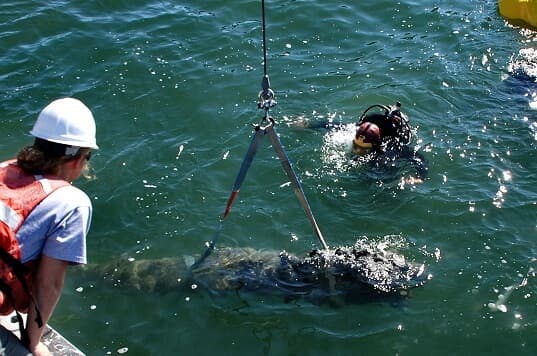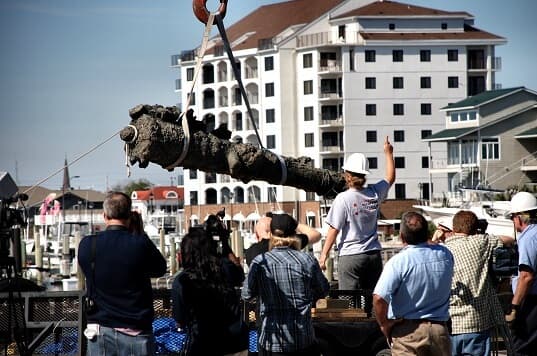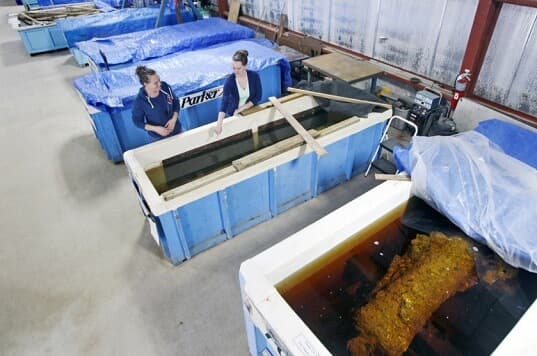Top 9 Pirate Ships from the Golden Age of Piracy



Queen Anne's Revenge (1710-1718)
The Queen Anne’s Revenge was the flagship of the legendary pirate Blackbeard. Originally, it was a frigate called Concord and was built in England in 1710. In 1711, it became a French slave ship called La Concorde. On November 28, 1717, pirates captured it and soon afterward Edward Teach, also known as Blackbeard, became its captain and renamed it Queen Anne’s Revenge. He sailed this ship only a few months; during that time, he managed to gain a lot of treasure and the reputation as the most frightening of pirates. Queen Anne’s Revenge was a fast ship, easy to operate, and able to hold a huge crew of as many as 250 pirates. Blackbeard sailed this ship around the eastern coast of Britain’s North American colonies and the West Indies, from the west coast of Africa to the Caribbean, assaulting British, Dutch, and Portuguese merchant ships he met along the way. He established a union of pirates and obstructed Charleston harbor, South Carolina, in May 1718. After a short crisis, he ran Queen Anne’s Revenge aground on a sandbar near Beaufort, North Carolina.
Adventure Galley (1657-1698)
Adventure Galley was the ship of the infamous privateer William Kidd. It was a hybrid ship that was equipped with both square positioned sails and oars and therefore was easy to manipulate regardless of weather. It was launched in 1695 and, in the next couple of years, journeyed across the Atlantic and Indian Oceans. William Kidd was a privateer, and the original purpose of his mission was to protect British ships in the East Indies by tracking down pirates as well as French ships. The treasure and gold gained during Kidd’s mission were supposed to pay back the cost of the ship and the equipment, including 34 guns and 23 oars. However, Kid failed to gain enough treasure to do so. As a result, he became a pirate himself and began attacking allied ships. With this ship, Kidd triumphed over two Indian boats and took them back to Madagascar. By the beginning of 1698, Adventure Galley became severely damaged. The hull was rotten and leaking, and the ship wasn’t seaworthy anymore, so Kidd abandoned it off the coast of Madagascar. The shipwreck has not yet been found.
Whydah Gally (1716-1717)
Whydah was a fully equipped galley ship. It was the first and, until recently, the only ship whose remains were discovered and fully identified. Before it became Samuel “Black Sam” Bellamy’s flagship, it was a slave ship that belonged to Sir Humphrey Morice, a member of the British Parliament and the infamous London slave merchant. Its captain was Lawrence Prince, a Dutch buccaneer. Black Sam Bellamy managed to capture Whydah on its very first journey from Africa. He refitted it as his flagship, equipped with ten additional cannons and continued to the North. During the journey, a storm crashed it and broke one of its flagpoles. As said by those who survived, at the time of its sinking, there were nearly five tons of silver, gold, gold dust, and jewelry on the ship. Whydah’s wreck and most of its treasure were found in 1984.
Fancy (1694-1695)
Before it became Henry Every’s Fancy, this ship was named Charles II, and it was commanded by the privateer captain Gibson. It was anchored at Corunna, Spain, when Henry Every and his allies left Captain Gibson ashore, took the ship and went for the Cape of Good Hope. Every completely refitted the ship and made it one of the fastest ships active in the Indian Ocean. No one knows what happened with Fancy after its captain decided to retire. Most probably, Every gave the ship and its treasure to the governor of Nassau to pay off his freedom.
Royal Fortune (1720-1722)
Bartholomew “Black Bart” Roberts had an interesting habit of naming his flagships the same: Royal Fortune. However, the last Royal Fortune was the most remarkable one, with 40 cannons and the crew of 157 men. It could fight with any Royal Navy ship of the time. This colossal ship was originally a frigate named Onslow. Roberts captured it in 1721 and attached 40 cannons on it. Royal Fortune was an almost unbeatable pirate ship. Roberts was aboard this Royal Fortune when he got killed in an encounter with the Swallow in February of 1722.
Golden Fleece (1684-1687)
The Golden Fleece belonged to the notorious English pirate Joseph Bannister who was an upstanding merchant at the time when he became the captain of this ship. He traveled across Atlantic, distributing goods like sugar, hides and indigo dyes between London and Jamaica before he decided to steal a boat and become a pirate. In 1684, Bannister took the ship, and its thirty to forty guns selected a hundred men for his crew and went to Port Royal, Jamaica. With The Golden Fleece, Bannister once managed to overpower two Royal Navy warships in combat. This unbelievable triumph earned Bannister and his ship a place in pirate legend. The wreck of The Golden Fleece was found in 2009 at Samaná Bay, Dominican Republic.
Revenge (1717-1718)
Revenge was probably the only ship in the history of piracy that was regularly purchased by a pirate. Its captain, Stede Bonnet, also known as “The Gentleman Pirate,” was not a typical pirate. He was a wealthy landowner and had a family before he decided to turn to piracy, because of either marital problems or a desire for adventure. Although he didn’t have sailing experience, in 1717 he equipped a ten-gun ship and named it the Revenge. That was possible because he pretended that was going to get a privateering license. Bonnet once temporarily ceded his ship’s command to Blackbeard, with whom he collaborated closely for a while. After Blackbeard had betrayed him and stole his ship, Bonnet accepted a pardon from authorities to become a privateer and changed the Revenge’s name to the Royal James.
Delivery (1722-1723)
Once a slave ship called Gambia Castle, under the command of Captain Charles Russell, this vessel was taken over by the second mate and the crew. The second mate, George Lowther, was made captain and he renamed the ship, Delivery. Delivery was a mid-sized yet well-equipped ship. Lowther developed the tactic of knocking his ship against another, while his men moved into and robbed it. Then one day in 1721 he encountered the Greyhound captained by Benjamin Edwards. Lowther gave a cannon shot as a warning, Edwards responded with a broadside, while Lowther’s crew went aboard the Greyhound, probably killed the whole crew and destroyed the ship.
Mary Anne (1778-1786)
The destiny of the pirate ship called Mary Anne is closely tied with the one of Whydah Galley. It was seized by Black Sam Bellamy during the same journey, and it became a part of the same fleet. Its captain was Palgrave Williams, an atypical pirate who was a wealthy goldsmith before turning pirate in 1715 or 1716. Mary Anne was wrecked the same night as Whydah, ten miles south, on the shore at Pochet Island.